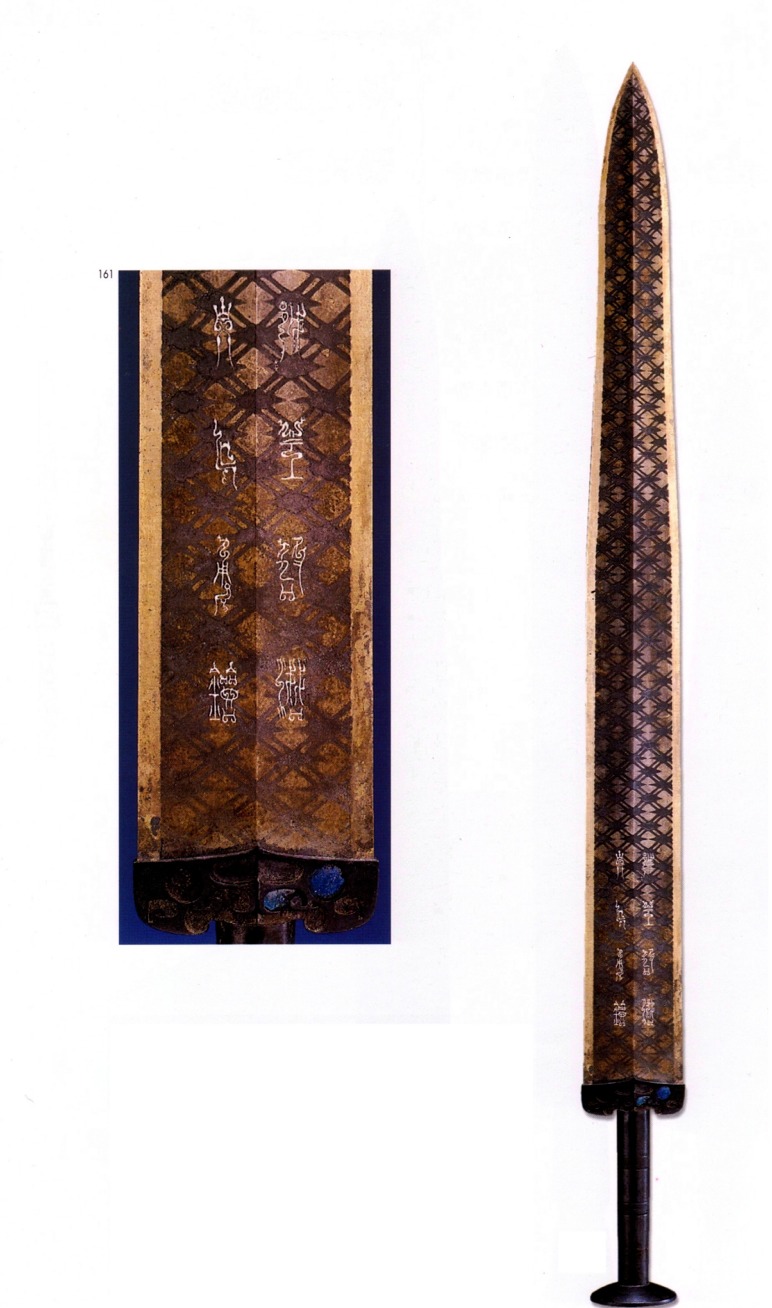|
|
|
|
|
|
|
|
|
|
|
|
|
|
|
|
|

 |
Ganjiang and Ouye (both active 500BC, early Warring States Period) were the 2 most famous and legendary swordsmiths in Chinese history.
Topmost pic -- Bronze weapon of King Goujian (ruled 496-465 BC) of the State of Yue of the Warring States Period. The 8 archaic Chinese characters of gold inlay on the sword state: "Sword made for King Goujian of Yue, for his personal use."
One hypothesis speculates that this distal-tapered sword was made by coating a bronze alloy layer (with a very high tin content) all over a typical bronze sword, after which the careful scraping or removal of the outer coating in geometric lines was done to reveal the underlying surface, thereby creating the look of tortoise shell-shaped geometric patterns on the sword. Others speculate that the sword was cast and then work-finished, exhibiting a sophisticated method of laminated construction yet to be understood.
The above sword was identical to one of the two swords made by Ganjiang for King Helu of the State of Wu, the information handed down in a legend. The story behind this 2000-year-old legend of Ganjiang making a tortoise shell pattern bronze sword for King Helu of Wu is as shown above.
_________________________________________
Picture on the right: Some people say that this bronze sword could be one of the "Yuchang" or "fish intestines" swords supposedly made by swordsmith Ouye. Note the irregular depressions and the surface patterns on the sword, said to resemble the shape of fish intestines.
According to historical records, an assassin of King Helu of the State of Wu had used this type of "fish intestines" sword to kill King Helu's predecessor, King Liao, who was Helu's kin. Reportedly, King Liao had worn 3 layers of armour but the sword pierced through and killed him. The original sword could be ranked as one of the most famous swords in all of Chinese history and lies buried and unexcavated in King Helu's tomb at Tiger Hill in the city of Suzhou. It is interesting to note that the famous strategist Sun Tzu, who wrote the military classic "the Art of War", had once served under King Helu.
|
 |
|